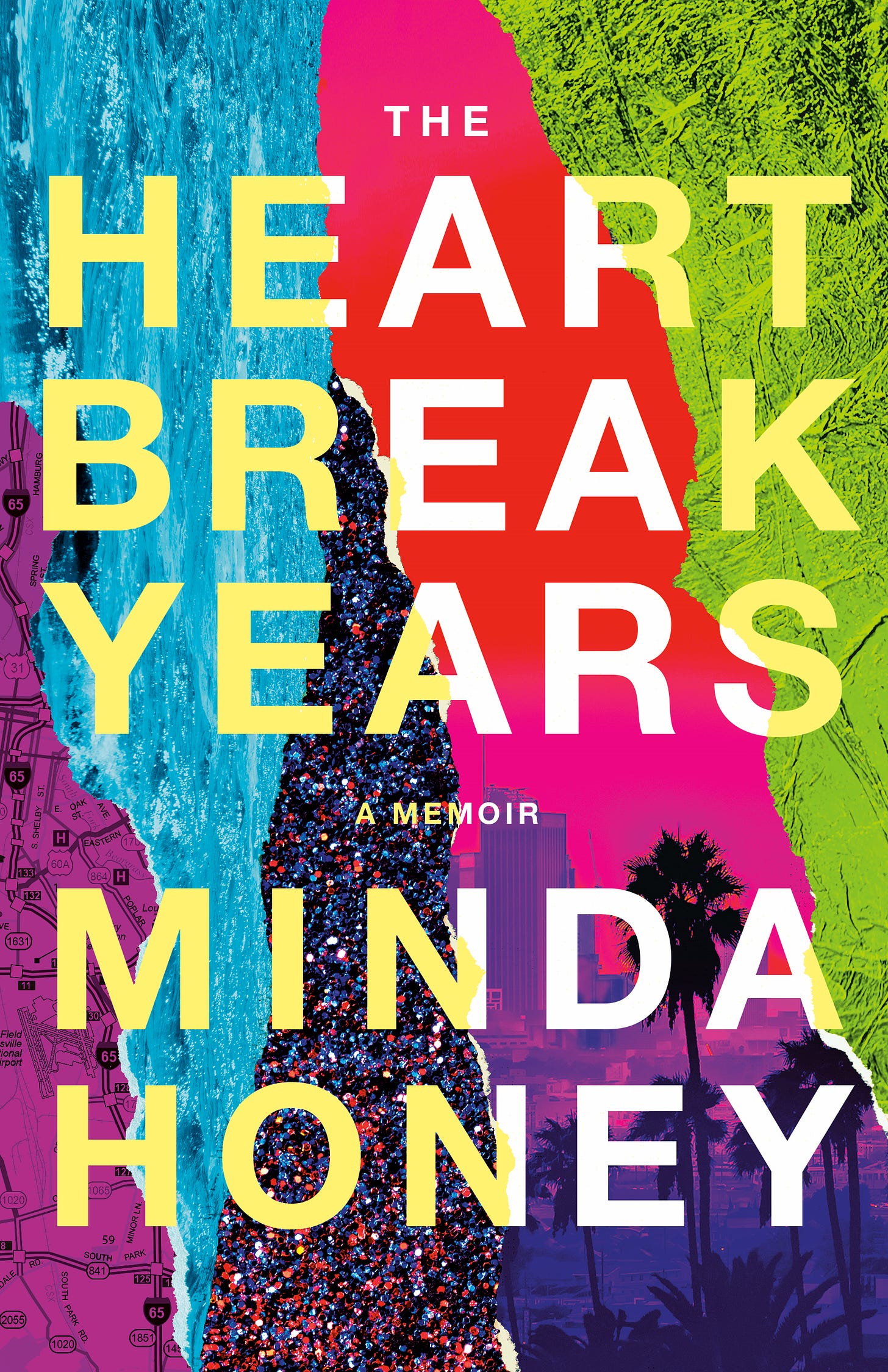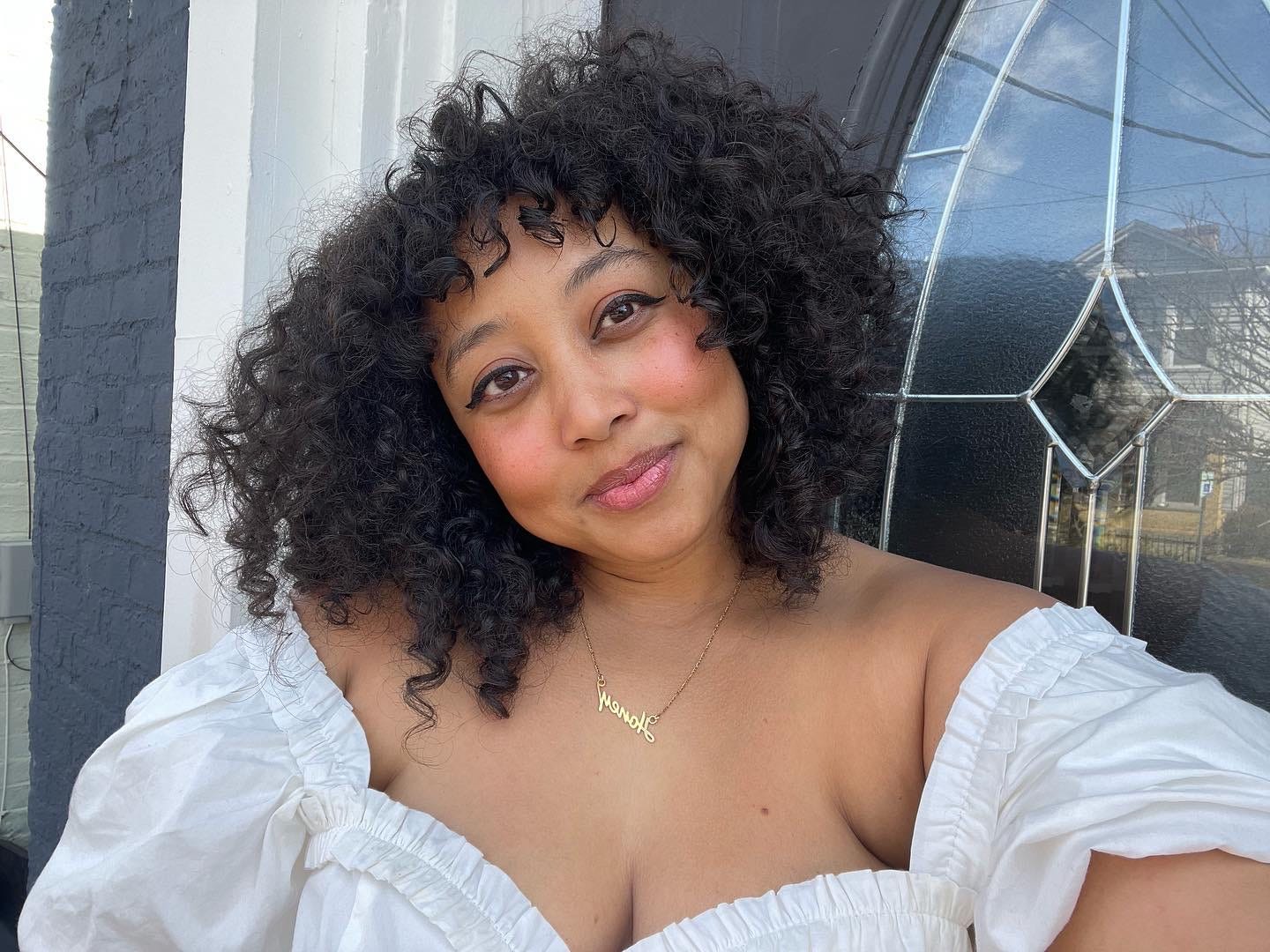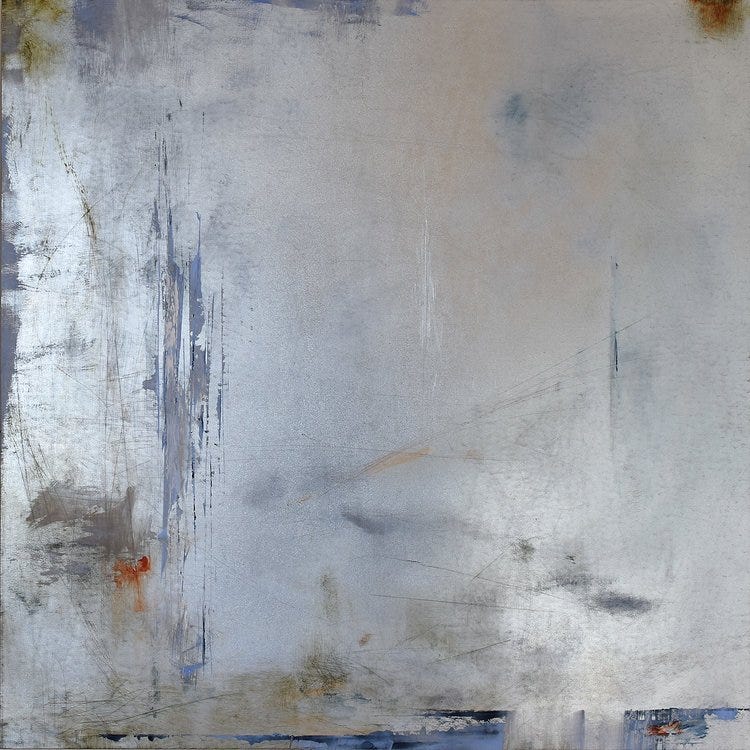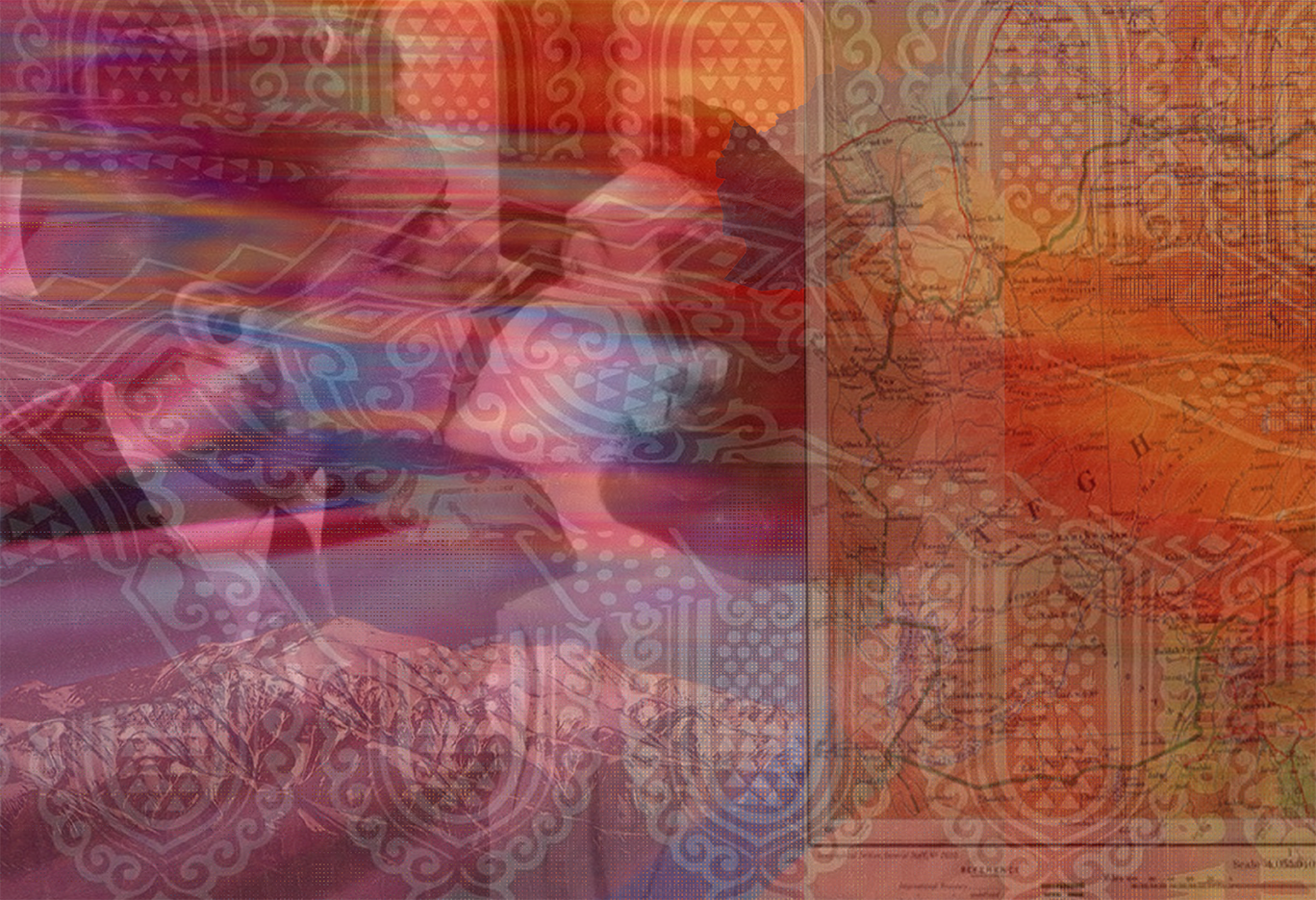Interview with Minda Honey | Featured Writer Michelle Naka Pierce | New Curated Teams
"Minda Honey’s highly-anticipated debut memoir, The Heartbreak Years (Little A, October 2023), was destined to be a bestseller..."
Welcome to KHÔRA, a dynamic online arts space edited and curated by Leigh Hopkins and produced in collaboration with Lidia Yuknavitch’s Corporeal Writing. Visit our Archive to read previous issues. Scroll down if you would like your work to be considered for future issues.
Our latest issue includes my featured interview with Minda Honey, author of The Heartbreak Years (Little A, October 2023), which debuted this week as the #1 Bestseller on Amazon in Black & African American Biographies & Memoirs. Minda is a delightful human and a phenomenal literacy citizen, and we’re thrilled for her! Scroll down to read our conversation.
In Issue 27, we’re featuring new work from Writer and Poet Michelle Naka Pierce. We’re also thrilled to introduce our new curated teams! For the next four issues, we are collaborating with writers Heidi Biggs, Kate Finegan, Leila C. Nadir, and aureleo sans; and artists Cary Adams, Susan Circone, Sarah Grew, and Linda Sormin.
Many thanks to Sari Botton for featuring Cristina Olivetti’s essay “Ludicrous” (KHÔRA, Issue 26) in this week’s issue of Memoir Monday.
We’ll be back soon with new features and more from our curated teams.
Big love,
Leigh Hopkins
and the Corporeal/KHÔRA squad
Swim around in KHÔRA.
Issue 27 Highlights
Featured Interview with Minda Honey | Interviewed by Leigh Hopkins
Minda Honey’s highly anticipated debut memoir, The Heartbreak Years (Little A, October 2023), was destined to be a bestseller. Her essays on politics and relationships have appeared in the Los Angeles Review of Books, The Washington Post, The Guardian, the Oxford American, Teen Vogue, and Longreads. Author Kiese Laymon wrote of Honey’s debut: “Minda Honey has created a momentous piece of art, of course, but most importantly, The Heartbreak Years will teach a generation of us what's possible when writing through, to, and beneath the pulpy inside of desire and fear.” The Heartbreak Years debuted as the #1 Bestseller on Amazon in Black & African American Biographies & Memoirs.
The Heartbreak Years opens with Honey’s cross-country move from Louisville to Southern California with her high school boyfriend. After the couple breaks up, Honey stays in California and enters a steamy, frustrating, sometimes perilous dating world that’s nothing like she had hoped for. Honey writes about this time with humor, honesty, and vivid detail — a cinematic, slow-motion panning of the camera; the details of an outfit; the pulse of a club. In many places, the book reads like a sparkling rom-com, but Honey seamlessly weaves her relationship woes with threads of consent culture, police brutality, privilege, and employment discrimination.
Minda and I chatted over Zoom from her home in Louisville, where she was surrounded by bookshelves. This interview has been edited for clarity.
Read Featured Interview with Minda Honey.
Featured Writer Michelle Naka Pierce is daughter of Sensei Michiko Masuda Pierce, partner to poet Chris Pusateri, human healing from surgery, poet embodying her future book, professor in the Jack Kerouac School of Disembodied Poetics at Naropa University, and author of nine titles, including four full-length works: TRI/VIA with Veronica Corpuz; Beloved Integer; She, A Blueprint with art by Sue Hammond West; and Continuous Frieze Bordering Red, awarded Fordham University’s Poets Out Loud Editor’s Prize.
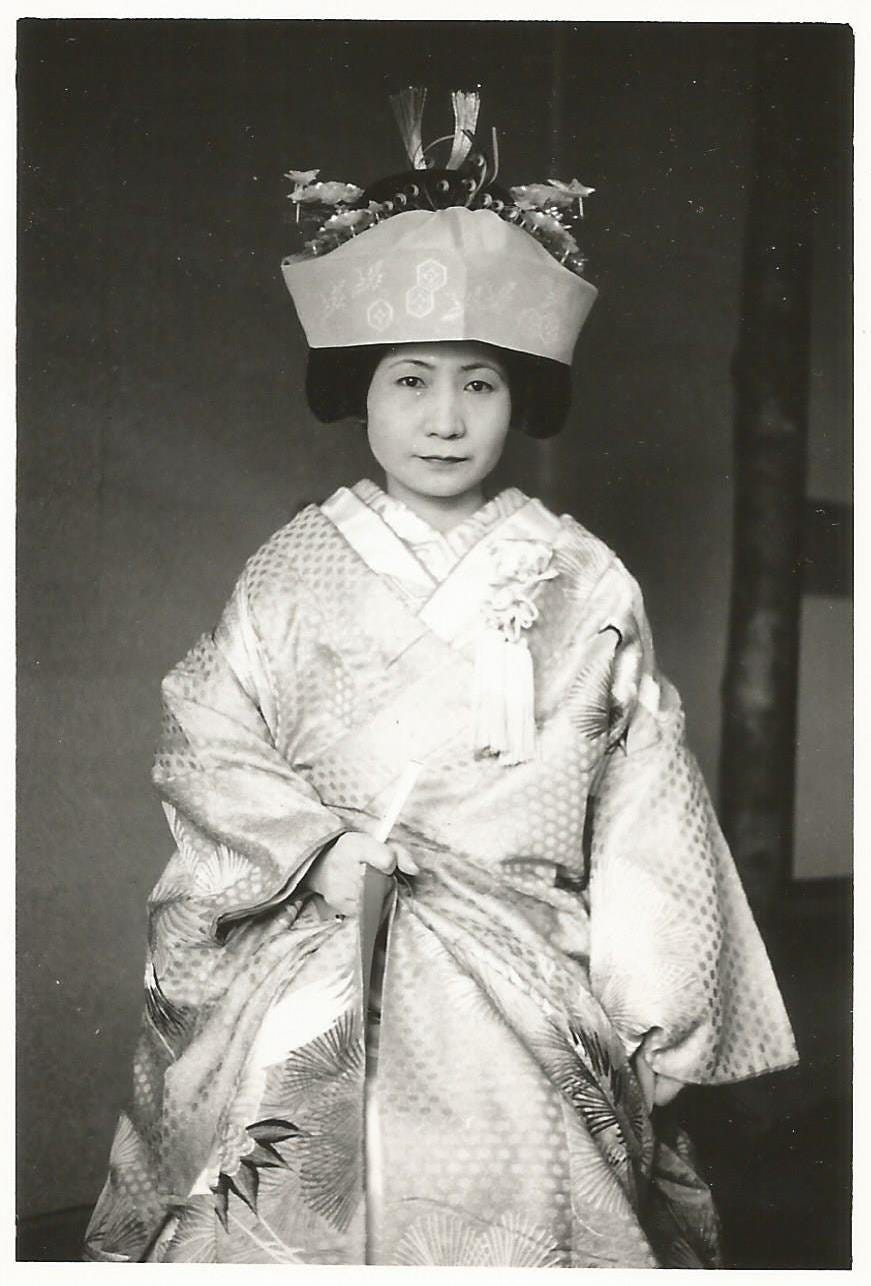
Sutured Memori by Featured Writer: Michelle Naka Pierce
In this wedding day photo, you see Mama in Ritsuko Obasan’s face. You are told she is the pretty one. Or the smart one. Or the feisty one. Unreliable memory. Sisters five. Surely, there are many ones. In front of her womb, her fist pulls the fabric of the kimono tight—gutto gaman / a symbol of endurance. Perhaps a gesture of strength against the future growth. At four, you travel with Mama to Japan as your aunt lies dying…
Read Sutured Memori.
New! From our Curated Teams
aureleo sans is a Colombian-American, non-binary, queer, formerly unhoused writer and poet with a disability who resides in San Antonio, Texas. She has been named a Sewanee Writers Conference Scholar, a Tin House Scholar, a Roots Wounds Words Writers Retreat Fellow, a Lambda Literary Fellow, an ASF Workshop Fellow, and a Periplus Fellow. Her work has appeared in Shenandoah, Electric Literature, Passages North, the 2023 Best Micro Fiction Anthology, and elsewhere.
Linda Sormin explores fragility, upheaval, migration, survival and change through sculpture and site-responsive installations. She was a 2021 and 2023 participant at European Ceramic Workcentre in the Netherlands, creating new work for three exhibitions: Ceramics in the Expanded Field: Sculpture, Performance and the Possibilities of Clay at MASS MoCA, North Adams, MA, USA, No Boundaries at Messums, London, UK, a solo exhibition at Messums, Wiltshire, and a two-person exhibition at Peach Corner Gallery in Copenhagen, Denmark.
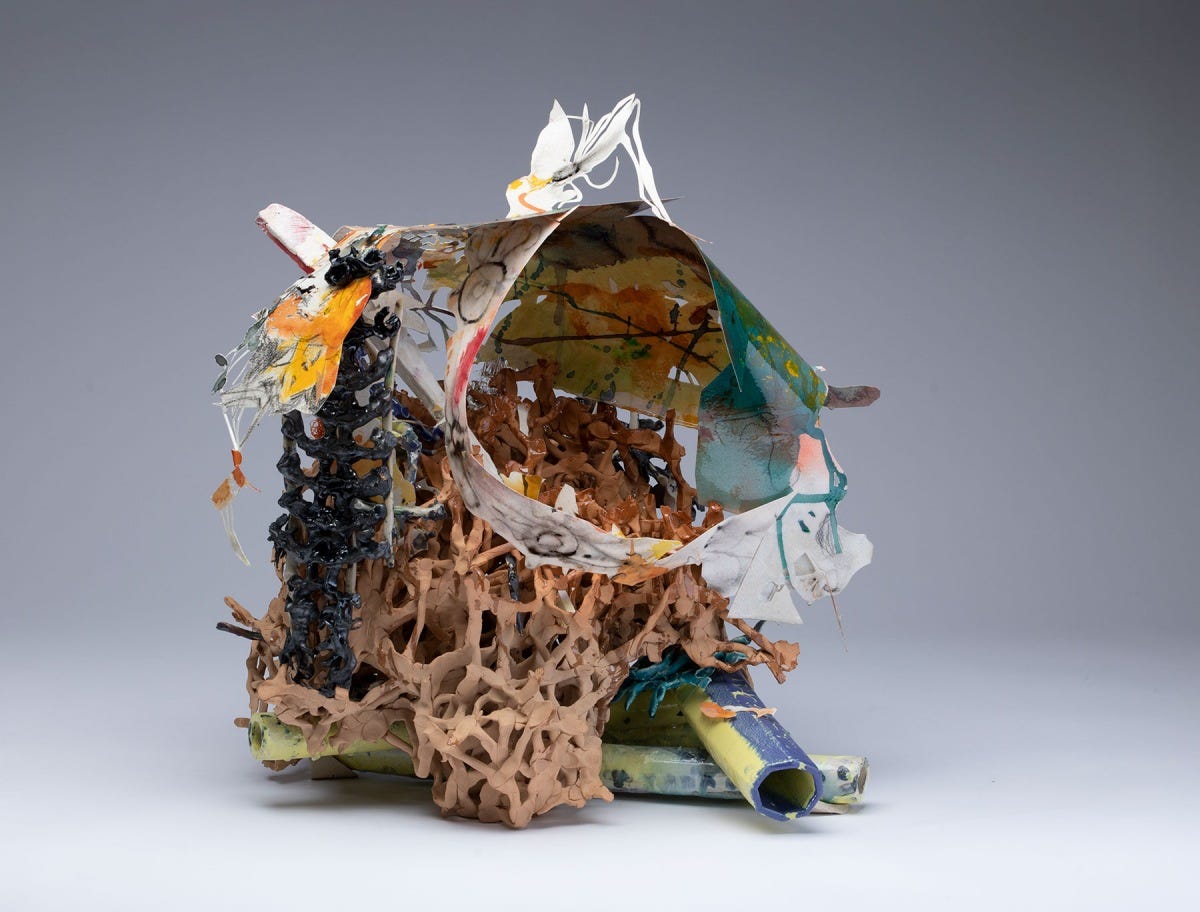
owl woman by aureleo sans | artwork by Linda Sormin
She had Mami’s face, except her eyes were lights out.
I yelled, “I didn’t do anything. Why don’t you believe me?”
She said I’d been making eyes at Father Tony again. I hadn’t. She said I was becoming the “Bobo” that los diablos with pitchfork tails and pitchfork tongues wanted me to be, that I’d always wanted to be.
It’s hard to convince someone of anything, especially when you live in different realities. Mami’s body is here, but most often she’s away…
Read owl woman.
Kate Finegan is a writer and editor exploring the interplay between stories and reality. She serves as novel/novella editor for Split/Lip Press, and her work is supported by Canada Council for the Arts, SK Arts, and Access Copyright Foundation. She lives on Treaty Six territory in Edmonton.
Sarah Grew creates art based in painting and photography, that expands into installation and environmental art and contracts into collage and printmaking. Her work includes a range from public art projects to wall based pieces belonging in private collections nationally and internationally. In researching the concepts that enrich her work she has become a beekeeper, studied native plant habitats, and worked as an Artist-in-Residence for a recycling facility in California.
How to Swallow a Sword by Kate Finegan | artwork by Sarah Grew
Listen to Pop when he says, "We could use a sword swallower." Let hope bloom in your ribcage, tendril-tangle your esophagus; hope he means the show could hire someone else to perform this fearsome act, so when he crosses the room to tip your head back and study your throat, as if reading curves and dents to augur your fate, you can't spit out the word no…
Leila C. Nadir is an Afghan-American writer and artist working on a memoir that examines the global geopolitics that invade our living rooms and the intimate violences that reverberate across the planet. She has received awards and fellowships from MacDowell, Hedgebrook, Bread Loaf, de Groot Foundation, Tin House, Aspen Summer Words, and Maine Arts Commission. Her writing has appeared (or will soon) in Michigan Quarterly Review, Black Warrior Review, Khôra, Shenandoah, North American Review, Asian American Literary Review, Aster(ix), and ASAP/J.
Cary Adams is an interspecies kin-maker, folk-punk musician, environmental artist, and creative-critical researcher investigating a modern memory disorder that he and his collaborator Leila Nadir call “industrial amnesia.” His work is in the collections of the Whitney Museum of American Art and the New Musum and has been supported by awards, fellowships, and residencies from the National Endowment for the Arts, New York Foundation for the Arts, New York State Council on the Arts, Franklin Furnace Fund, and the Maine Arts Commission.
Bollywood Hijab 1985 by Leila C. Nadir | artwork by Cary Adams
The problem was sex. And by sex, I mean kissing. Especially kissing between unmarried people or underaged kids. That was the worst kind of sex—I mean, kissing—and that was the kind American media liked best. The United States of America cannot imagine a single storyline without the Obligatory Premarital Kiss. I know because as a kid I tested out all the safest show options...
Heidi Biggs (they/she) is a writer and academic living in Atlanta, GA. They have an interdisciplinary background, holding a B.A. in Literature, MDes in Interaction Design, and PhD in Informatics. They are currently a research scientist at Georgia Institute of Technology exploring intersections of storytelling, theory, design, and technology in relation to climate change. Their writing and research explores queerness, embodiment, land histories, and ecological entanglements and they believe we need new kinds of stories to imagine new worlds.
Susan Circone has lived on both coasts of the U.S. and currently resides in the Portland, OR area. She started quilting in the early 1980s and has been working off and on in fiber ever since. After learning the fundamental skills of quilt construction and how to dye and print her own cloth, she continued her art education at Portland Community College. Susan’s work predominantly uses abstracted microbiological and cell imagery that ties into her background as a research scientist in the geological sciences. She is currently a member of the Columbia Fiber Arts Guild, High Fiber Diet, Surface Design Association, and TAFA: The Textile and Fiber Art List.
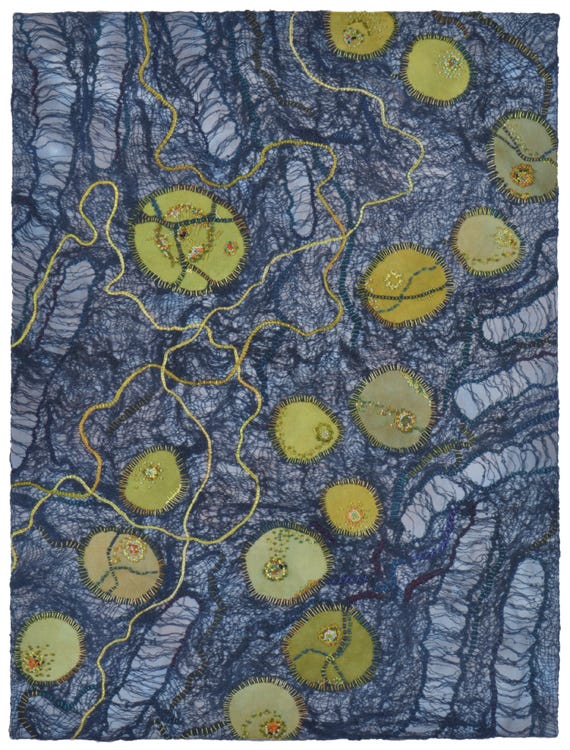
PhD Body by Heidi Biggs | artwork by Susan Circone
I walk around with my body like a double, funhouse mirror, she/they they/she are walking on top of paths we walked before more blindly, as if someone put tracing paper over a sketchy drawing and drew stronger lines this time. PhD body sees the youth, the people walking along the lines for the first time, through the scrim and loves them but can’t quite touch them, the way people touch when they are in love at the same time in the same place in the same iteration of life…
Send us your work!
Writers, if you'd like to enter the collaborative open waters of KHÔRA, please send us 500 Words. If you’re a visual artist interested in submitting artwork or images, click here.
When you send us 500 Words, your words will always remain active in KHÔRA’s ocean. You won’t ever receive a notice of rejection from us. We know this process is not perfect—we are rethinking and searching, and we wish to stay open to the possibility that at any point, your work will be a fit for a curated issue or team-collaboration. This doesn’t need to be a completed piece—think of it like a sample of your work at any length up to 500 words.
Once you send 500 Words, your work will remain in our inclusive and expansive space.




